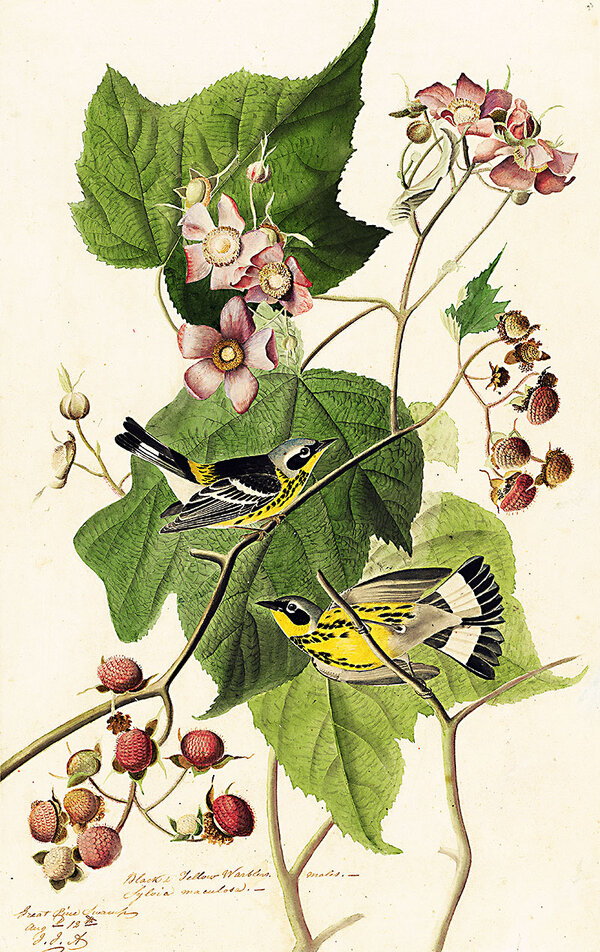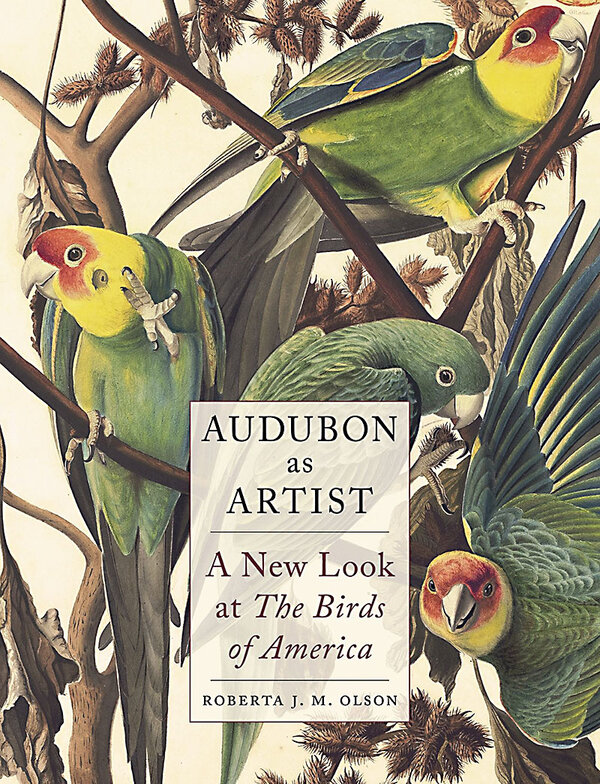Audubon’s exquisite bird paintings owe a debt to classical European art
Loading...
John James Audubon was more than a 19th-century self-taught ornithologist with a plan to depict bird species across America.
In “Audubon as Artist: A New Look at ‘The Birds of America,’” author Roberta J.M. Olson argues that Audubon’s lively and lifelike bird paintings drew their inspiration from classical European artists.
Why We Wrote This
Looking beyond an artist’s brushstrokes can shed fresh light on his inspiration. A new book digs deep into John James Audubon’s fascination with classical European art, which influenced his celebrated bird paintings.
“He felt comfortable invoking Raphael, Titian, Rembrandt or Van Dyck in his writings and in his watercolor models for ‘The Birds,’” Olson writes.
Audubon’s career culminated in the publication of the four-volume “Birds of America” published between 1827 and 1838.
He was a dramatist at heart, and an abiding quality of his bird paintings is their vivid sense of theater. Even in pastoral scenes like his study of two magnolia warblers, the little birds vibrate with expectancy, each obviously poised for flight.
Nature for Audubon always had this kinetic quality; for him, movement was an essential proof of life.
Keeping up with America’s vast array of ornithological wonders has always been a group effort, and even the audacious Audubon couldn’t do it alone. “Audubon as Artist” is a timely reminder of his debt to many others.
When John James Audubon immigrated to the United States from France in 1803, his timing was fortuitous. That same year, the Louisiana Purchase doubled the size of U.S. territory, deepening national curiosity about what lay in the vastness.
Audubon (1785-1851) answered that interest with “The Birds of America,” a mammoth pictorial survey of ornithological wildlife from the continent. People back in Europe were also intrigued, and Audubon capitalized on the endeavor’s broader appeal.
His project, which included 435 prints based on his watercolor paintings, depended partly on wealthy patrons across the Atlantic who were willing to buy the costly volumes of his “Birds of America” series, too. He also drew on the technical skill of printer Robert Havell Jr. in London to make the prints we now consider masterpieces.
Why We Wrote This
Looking beyond an artist’s brushstrokes can shed fresh light on his inspiration. A new book digs deep into John James Audubon’s fascination with classical European art, which influenced his celebrated bird paintings.
In “Audubon as Artist: A New Look at ‘The Birds of America,’” Roberta J.M. Olson argues that Audubon drew more from Europe than financial and technical support. He also gained inspiration from European artists such as Jacques-Louis David.
“He felt comfortable invoking Raphael, Titian, Rembrandt or Van Dyck in his writings and in his watercolor models for ‘The Birds,’” Olson adds. Audubon’s career culminated in the publication of the four-volume “Birds of America” between 1827 and 1838.
Much has been written about Audubon and his work, but no one has charted his possible artistic influences as thoroughly as Olson, who has studied his art as a curator at the New-York Historical Society, where Audubon’s “Birds of America” watercolors are housed.
One likely reason that Audubon’s relationship with other artists has been neglected is that he’s been so celebrated for his singularity. In rejecting the static conventions of 19th-century bird art to create wildlife scenes that are pageants of motion, Audubon seemed more intent on breaking tradition than extending it.
Even so, Olson sees parallels between Audubon and previous masters, and her book includes many color reproductions of their work near his masterpieces so that readers can draw their own conclusions.
One such picture is “Death of Socrates,” David’s 1787 oil on canvas in which the heroic philosopher, his finger raised in a bold gesture of instruction, bids farewell to his students, a teacher to the finish. From David, says Olson, Audubon would have learned the ideal of tightly controlled compositions in the foreground, a key principle of his bird art.
Like David, Audubon was a dramatist at heart, and an abiding quality of his bird paintings is their vivid sense of theater. Even in ostensibly pastoral scenes like his study of two magnolia warblers, the little birds vibrate with expectancy, each obviously poised for flight as they perch on a blooming raspberry bush. Nature for Audubon always had this kinetic quality; for him, movement was an essential proof of life.
“Audubon as Artist” has arrived at a time when Audubon’s life and legacy face fresh scrutiny. He bought and sold enslaved people, and his racial views reflected those of many Americans of European descent in the 19th century. Critics wonder how a man whose bird pictures stood as emblems of freedom could embrace the bondage of other human beings. Our experience of his work today is further shaped by the knowledge that many of the bird species he painted were displaced by settlers who also drove out Indigenous people.
Olson tells readers early in “Audubon as Artist” that his social views and practices are best addressed in depth beyond her book – ideally within “a detailed biography that does not judge its subject solely by current values but takes into account those of his time.”
Audubon’s beliefs, which were widely shared by his contemporaries, can appear all the more surprising to us because in so many other respects, he seemed thoroughly modern. His deeply candid journals sometimes read like recent confessional memoirs, and this gripping sense of intimacy touches his pictures, too.
In carefully editing nature to create arresting narratives, Audubon deftly anticipated the kind of storytelling we’ve come to expect from nature documentaries. Crammed like a biblical ark with creaturely wonders, “The Birds of America” conveys a sense of summation, although its chronicle of American bird life is far from complete. (“The Birds That Audubon Missed,” a new book by Kenn Kaufman, underlines that reality.)
Keeping up with America’s vast array of ornithological wonders has always been a group effort, and even the audacious Audubon couldn’t do it alone. “Audubon as Artist” is a timely reminder of his debt to many others.










